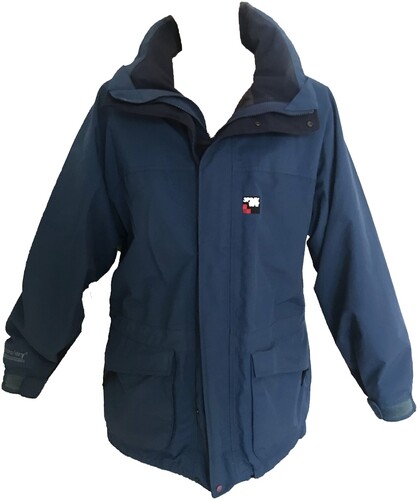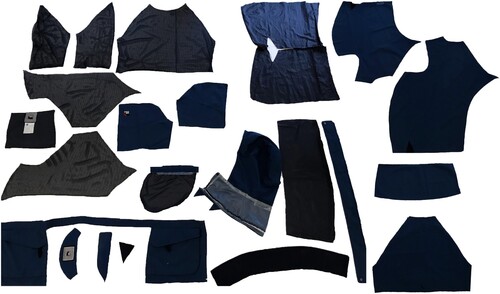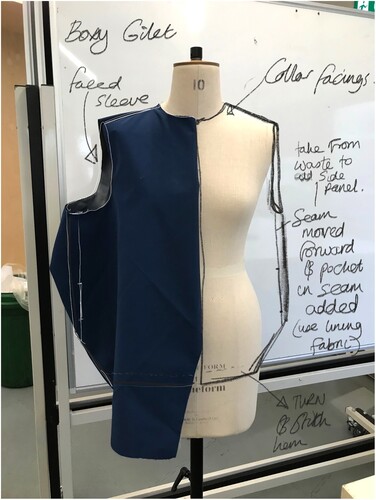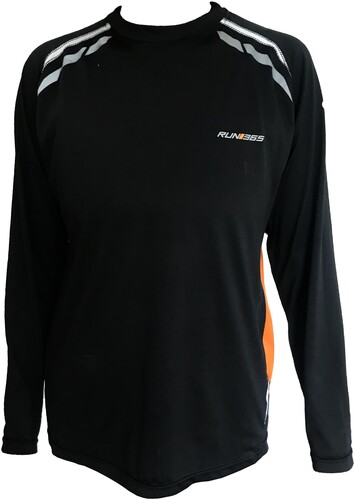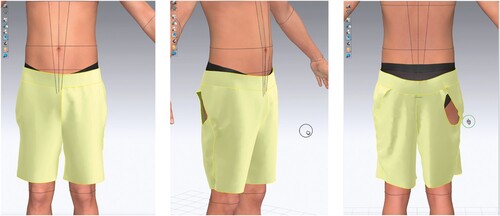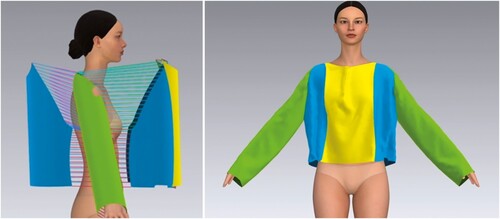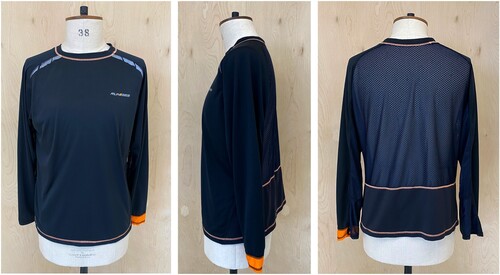ABSTRACT
The boundaries between physical and digital practice within fashion are becoming increasingly blurred, with recent technological advancements seeing brands launching virtual collections and retailing fashion products for the Metaverse. This foray into a digital space has acted as a catalyst for the use of digital software in practical design and make applications and provided opportunities for innovation when challenging ecological parameters. Utilising an action research approach, this paper proposes three cycles of iterative problem solving, creating an interplay between physical and virtual garment experimentation. A process of product deconstruction, digitisation and remanufacture has provided insights into the possibilities of new practices enabling garment remanufacture methods for circularity. Findings have indicated that the use of 3D fashion design software can aid in the diversion of whole garments from the landfill and help enable commercial viability in methods of remanufacture within the sportswear market sector.
Introduction
Creative fashion practice is renowned for being closely aligned with specialist craftmanship processes and heritage materiality, skills for centuries which have relied on tactility and principals of learning-through-doing methodologies. However contemporary methods of fashion design and make are increasingly relying on digital ways of working, utilising tools and technologies to enable innovative developments in the creation, development and production of clothing. This is increasingly being utilised across multiple market sectors including the luxury market sector, with brands such as Prada and Thom Browne collaborating with tech company Meta to enable the customisation of avatars across digital platforms through the purchase of digital pixel clothing (Parkes, Citation2022). Opportunities for this approach however reach far beyond the luxury market, with relevance to innovation-led sectors such as technical apparel and sportswear being potential early adoptors. This evidences the emergence of a new, digital market in which fashion design software plays a crucial role in facilitating the demand for virtual clothing. Examples include Balenciaga, who have become a focus of the digital fashion space, with their Fall 2021 collection being released via a range of digital player skins in collaboration with gaming platform Fortnite. The luxury French fashion house plans to continue exploring opportunities for marketing and commerce in the MetaverseFootnote1 (Williams, Citation2021), embracing the contemporary adaptations occurring within the industry.
The increasing relationship between fashion and the Metaverse is being reflected in the development of 3D fashion design software for the development of digital design tools in both industrial and educational applications, which is beginning to blur the space between the physical and digital, pushing creative boundaries and encouraging brands to adapt their value chains. Harnessing the application of fashion design software such as Clo3D or Browzwear can adopt 2D digital behaviours for 3D creation of garments in fashion retail, with the digitisation of the design and development process easing communication with brand’s supplier base, increasing accuracy, speed and also reducing waste created through extensive sampling. Furthermore, digital collections could be marketed and tested with potential customers without the need for any sampling, reducing significant amounts of labour and resources.
This paper investigates the potential of utilising fashion design software, such as Clo3D, to harness 2D digital design development methodologies for the creation of 3D apparel. Through physical and digital exploration, the role of the designer, in collaboration with digital tools, was questioned when considering the options available to minimise the environmental impact of garment end-of-life. The research approach embraced tactile and experiential learning through the exploration of moulage, questioning how these traditional methods could work in tandem with digital problem solving to enable remanufacturing processes.
Literature review
The market size for sports goods in 2021 was worth an estimated £17 million, with a peak in consumer interest of activewear in 2020 due to the global pandemic and an increase in home exercising (Mintel, Citation2021), contributing significantly to this market growth area. Furthermore, an increase consumer spend of 18.7% between 2020 and 2021 (ibid.) mirrors not only the growth of consumption more generally in clothing but also accounts for the emergence of athleisure, a category of casual, everyday sportswear (Nam, Dong, & Lee, Citation2017), with extended periods of lockdown during the global pandemic acting as a catalyst for the sectors popularity amongst consumers. Alongside this increased value and purchasing, it is within the sportwear market that many clothing brands are beginning to innovate for increased sustainability. Mintel, a global market intelligence agency who provide expert analysis on consumer trends, market statistics and industry reports, named three of their top 10 ethical brands in 2020 as sportswear companies (Mintel, Citation2021), with recycled materials, repair services and vegan collections evidencing the sectors commitment to responsible business values.
Consumer interest and concern with sustainability within the context of their fashion choices is also experiencing a period of growth, with this steady increase being said to be accountable for companies strengthening their efforts to become socially and environmentally more responsible (Baier, Rausch, & Wagner, Citation2020). This was further evidenced in a recent consumer research study conducted by Mintel:
‘Consumers now place more importance on sustainability when buying fashion items than they did a year ago, with three fifths (60%) agreeing that it is important in 2021 compared with 56% in 2020.’ (Mintel, Citation2021)
This demonstrates an upward trajectory of consumer interest in sustainability in relation to time, indicating that the fashion industry needs to respond to such demand through their product offering, services offered and communication of their responsible values.
The role of the designer
Advancements in technology and changing ecological priorities are fundamentally affecting the role of the designer, with additional considerations being increasingly incorporated to their design parameters. It is widely recognised that smart solutions fit for a new fashion system are urgently needed, where resources can be utilised over and over again (Brooks et al., Citation2017; McDonough & Braungart, Citation2010; Niinimaki et al., Citation2020). However, this shift in practice, from the use of virgin materials to the incorporation of existing materials from waste streams, does result in the role and skillset of the designer changing (Global Fashion Agenda, Citation2020).
From a sustainability perspective, it is acknowledged that the environmental and social impact of a product is not traditionally within the remit of the designer (Stahel, Citation2010), with concerns being raised about the difficulties of inclusion of such considerations in addition to their focus on more traditional design elements (Karell & Niinimäki, Citation2020). It is, however, acknowledged that it is essential for designers to attain a deep knowledge of the products they design, enabling them to know how a product will age, how long the parts should last for and if it is expected to be refurbished (Bakker, Wang, Huisman, & den Hollander, Citation2014). McDonough (Citation2009) notes how the designer’s role is incredibly important when designing a product, as this is the stage in which it is possible to make choices that can allow the product to have another life. Furthermore, they emphasise how things need to be designed with recycling and reuse in mind, adopting a design to redesign and design for a second life mindset. However, it is to be acknowledged that this is not solely the responsibility of the designer but rather a joint effort needing a multi-stakeholder approach (Medkova & Fifield, Citation2016).
Remanufacturing in fashion
Through the exploration of sustainable possibilities for the fashion industry, remanufacture is increasingly becoming a commercially viable option. Remanufacture in its most basic form can be described as the process of reinstating a discarded product, back to its useful life (Lund, Citation1996), by upgrading the quality of the product and extending its useable life (Savaskan, Bhattacharya, & Van Wassenhove, Citation2004). Within the context of fashion, methods of remanufacture can be determined as a sustainable waste management strategy, involving the conversion of discarded clothing into reusable products to avoid landfill as an inevitable destination (Sinha, Muthu, & Dissanayake, Citation2016).
Scalability and process remain key challenges when implementing methods of remanufacture within fashion, with traditional production methods currently preventing industry adoption. Further barriers include consumer and market desirability of remanufactured products, with efforts towards further uptake of remanufacturing being pointless if the product is not wanted (Jenkins & Bertells, Citation2022). Additionally, function needs to also be a key consideration, especially in a sector such as sportswear with need going beyond desire but also encompassing practicality to prevent obsolescence (Iles, Treggiden, Tan, Egerton-Read, & Henao, Citation2021). Quality and value have also been questioned when considering remanufacture, with the value of a product said to be higher than the materials it is made from (Stahel, Citation2019), and recycled materials often being downcycled for a lesser quality product rather than being preserved for the creation of future goods (Global Fashion Agenda, Citation2020).
The point in which remanufacture is considered within the fashion product lifecycle is also emphasised as being crucial in successful implementation, with need not being argued but that consideration needing to be in place at the beginning of the design process (Stahel, Citation2019). Although it is to be acknowledged that methods of disassembly are rarely explored by designers (Karell & Niinimäki, Citation2020), thinking about the end of the product’s life at the beginning is needed to start designing products that can be returned to the manufacturing system. One method facilitating this approach is backcasting (Stahel, Citation2019), which allows designers to look forward to where they want to be, and then work backwards to ensure that the design is malleable enough to fit that future. It prompts the designer to reflect on the life of the product and challenge their design decisions and practices. This would pose questions such as does the product have scope for repair or remanufacture? And has the end of life been considered for the materials and trims in question?
Considering the key observations from the review of secondary literature, the aims and objectives of the study are as follows:
Aims
To utilise 3D fashion design software to retain value in existing garments through applied principals of remanufacture
To explore waste reduction through the use of digital and physical experimentation to encourage rapid problem solving in the remanufacturing design process
To promote circularity as an end-of-life solution through creative problem solving within the fashion design process.
Objectives
Through the deconstruction of technical sportswear garments, explore material possibilities of remanufacturing to ascertain quantities of waste created during the physical remanufacture process
Utilising physical 3D experimentation with deconstructed garment components, explore end-of-life possibilities through the application of problem-solving techniques such as moulage
Exploration of remanufacture through the digitisation of garment component pieces using 3D fashion design software, to determine methods of retaining value in existing garments.
Methodological approach
This research adopts action research cycles which encompass four unique stages: plan – act – observe – reflect (McKernan, Citation1996) and facilitated full immersion in the iterative process between digital and physical prototyping (). Reflection allowed for refinement and adjustment throughout the research process, in addition to incorporating design thinking values (English, Citation2006). It is to be acknowledged reflection in action can lead to positive insights (Schon, Citation1987), which is this case, included revelations into how 3D modelling can be used to enhance remanufacturing possibilities.
Three cycles of action research were developed focusing on sportswear. This product market remained the focus of the study due to specific challenges around the number of components utilised, and also complexities of deconstruction and construction methods such as seam sealing, both of which are common place in this market. Details of the methods utilised within each of the three cycles have been summarised below:
Cycle 1: First, a single garment was deconstructed, unpicking the stitching and bonded seams, breaking the garment down into its component pieces. Through engagement in this physical process, a better understanding of common construction methods and materiality was gained. To move the pieces towards remanufacture, various methods of digitisation were explored. Once a timely, efficient method of achieving this was established, the first cycle was complete, allowing findings to be reflected upon, informing and directing cycle 2.
Cycle 2: Next, multiple garments were deconstructed into their component parts to explore the variety of seam and fabric types within the garment to broaden understanding. Utilising the most efficient method discovered in the first cycle, the pieces were then imported into the digital fashion design software Clo3D. Design ideas could then be explored in a digital sense, allowing the researcher to analyse and reflect the process undertaken and to determine if the remanufacture of deconstructed garments was possible.
Cycle 3: Finally, processes established in cycles 1 and 2 were evaluated to determine if they eradicated waste and preserved material quality. The findings were then exercised in the creation of a 3D physical garment, utilising 2D digital redesign methods. Furthermore, this cycle aimed to repeat the deconstruction and digitisation process on multiple occasions to begin to build a library of digitally compatible garment components that can be used in future applications, broadening the scope of design possibilities.
The researchers visually recorded the process, taking photos and screen shots to facilitate and enable communication of the reflection process.
Results
Throughout the three action research cycles, experimentation across physical and digital forms occurred. Due to the progression of the phases, each cycle differed slightly, developing and expanding knowledge within the breadth of experimentation. Cycle 1 included two phases: (a) physical experimentation and (b) virtual experimentation; cycle 2 also included two phases: (a) physical experimentation and (b) virtual experimentation; cycle 3, however, reflected the interplay between the digital and physical experimentation, referring to physical and digital creation. Additionally, several garments were utilised to explore varying garment production techniques and include a range of component pieces and trims. For example, in cycle 1, a technical sportwear jack was the focus of the investigation, whereas with cycle 2, a long-sleeved, knitted running top and a pair of woven shorts were used.
Cycle 1 – physical experimentation
Exploration with this garment started with the lining, the aim was to take apart the seams, trying to preserve the seam allowance. A few insights were recorded at this early stage; first, some of the seams were stitched together three times, making it a very time-consuming process (with one seam taking up to 45 min); second, once the seams were unpicked, many of them were damaged meaning that the seam allowance had to be cut away from the recovered panel. The stretch quality of the fabric added to these identified challenges, meaning the fabric could also become distorted from the pressure. Upon reflection, the deconstruction method shifted to cutting the panels apart, minimising time and damage during the process ().
Trim components, such as zips, were mainly single stitched in place but for longevity and quality purposes, they were bar tacked at the top and bottom of the webbing. It was noted that bar tacks do strengthen areas of pressure on a garment, allowing them to last longer, but can easily damage the zipper webbing and fabric during the process of deconstruction. The trims removed from the jacket were two zippers, two elastic cords with plastic adjusters, 4 × 5 cm of webbing and two sections of Velcro. The snaps and the eyelets were not able to be removed from the jacket as they were attached via pressure, during which the fabric is penetrated and the metal inside the trim being bent to enclose the raw fabric edges.
Within the body of the jacket, seams were mainly felled, meaning there were no raw edges, however, to secure these seams, two rows of stitching and were utilised and then bonded with seam sealant. Again, due to these complex construction methods being utilised, it was decided that the best method of deconstruction was to cut each panel away, leaving the seams as potential waste. The hood and the front pockets remained as whole pieces, allowing exploration of how functional elements of the jacket could be utilised in the redesign process. Insights were recorded at this stage, highlighting how the integration of ready-made components could aid remanufacture, and how they could be adapted and reworked to fit and attach to a new design.
All component garment pieces from the jacket explored in cycle one, are pictured below ().
Following the traditional design and make process, these pieces were then taken onto the mannequin/dress form/body form to facilitate the exploration of design ideas. Having full component pieces, such as the hood and pockets, helped to reinforce how these could be included in future designs. Images were captured and then physically annotated to fully embrace the creative side of design process ().
Garment deconstruction can be an intricate and messy process, requiring a lot of time to preserve as much fabric as possible, while minimising waste. Further investigation into deconstructing different seam types was needed and was explored further in cycle two. Removing trims that were attached through stitching methods, rather than bonded, was possible, allowing them to be utilised during the remanufacture process. However, trims that were applied via pressure (i.e. snaps and eyelets) were not removable, and either needed to be in the same place in the following remanufactured garment, or cut. This limits the garment’s future possibilities.
Working on the mannequin/dress form/body form fuelled some interesting ideas that could be taken forward into 3D fashion design software. Using traditional fashion design development methods (including moulage, fabric draping and 2D to 3D realisation) could help bridge the gap between the physical and virtual world of design, by creating initial starting points that are then refined digitally. Furthermore, working with only one garment in cycle 1 emphasised that increased creative freedom, and to expand the possible outcomes, multiple deconstructed garments would be needed. It was after this period of reflection that the first cycle of virtual experimentation could occur.
Cycle 1 – virtual experimentation
Moving into the digital space, the first objective in this stage of cycle 1 was to understand how to accurately digitise the individual pattern pieces so they can be used in Clo3D. The digitisation of the deconstructed pattern pieces was paramount to the study to enable redesign methods to be conducted virtually, exploring the full range of creative opportunities through rapid prototyping, and preventing the creation of waste. The priority was to capture two particular properties within each component piece; shape and scale, as both were needed to mirror the physical counterpart for any virtual design outcomes to be feasible in reality. Considering that digital pattern pieces (DPP) would have to be drawn as vector shapes, which have low file sizes, it was resolved that any digital work needed to be produced at a scale of 1:1.
This initial digitisation of the pattern pieces was carried out manually using graph paper and plotting points to be translated into digital form; however, it is to be acknowledged that in an industry setting, a digitising board may be accessible. An industrial sized flatbed scanner could improve time consumption further and circumnavigating the need for any image correction.
A series of digitisation methods were explored during this initial cycle, with commercial feasibility and accuracy of digital translation being considered throughout. This included taking photographs of garment pieces positioned on graph paper and working from photographs as a point of reference to translate points to plot digitally using ruler features. These more lo-fi methods of digitisation were practical and cost effective and could easily be implemented within a commercial setting without the need for large-scale investment. However, they were very time consuming and therefore a reliance on specific equipment, as previously mentioned may be favoured within an industry setting.
Cycle 2 – physical experimentation
Upon reflection at the end of cycle one, it was recognised that multiple garments were required to allow for more in-depth creative experimentation, due to the yield of component pieces from only one garment significantly limiting the redesign process. To explore a breadth of fabrics, seam type, hardware and shape/size of component pieces, a long-sleeved, knitted running top and a pair of woven shorts were selected (opposed to a comparable jacket) to progress the study into cycle 2. These two garments presented new challenges from a materiality perspective, with both stretch and woven variations alongside a variety of finishes and trims.
The running top was 100% polyester (), with overlocked and flat locked seams and the shorts were 100% polyester with lock stitch and overlocked seams. Both garments were second hand and had been previously used by the wearer, which reflected the true state of garments prime for remanufacture purposes. The process relies heavily on a preservation of a certain level of quality within each garment, and within a commercial setting would require review on a case-by-case basis. In addition to wear, the quality of fabric was also influenced by the methods of deconstruction through either unpicking, which can cause holes and tears in the fabric, or cutting which eliminates this risk but can cause fraying and laddering dependent on fabric construction type. Due to material quality degradation, some elements of these garments were not salvageable, such as the shorts waistband, which were very worn and damaged; however, this deterioration of materials is to be acknowledged with any garment reaching the end of its useable life and being utilised for remanufacture. This insight emphasised the importance of combining garments to remanufacture new pieces, allowing the amalgamation of segments for a new garment, rather than trying to rebuild from one. It was also noted that, on lightweight garments, trims, such as zippers and waistbands, were more time consuming to remove, and stitching was more likely to result in damage when unpicked ().
Cycle 2 – virtual experimentation
Once a sufficient number of pattern pieces, from several different garments, had been digitised they were imported into Clo3D, which allows designers to design, construct and visualise garments in 3D. Panels from different garments were arranged in a single Adobe Illustrator document and imported into Clo3D together, which were then loosely arranged around a digital avatar before deciding how the pieces were to be stitched together. Clo3D proved to be very intuitive software and stitching various panels together was straightforward, providing realistic results. An initial exploration into recreating a pair of shorts produced results that aligned accurately to the real-life shorts, including a missing pocket ().
A secondary exploration into combining panels from different garments produced misalignments, gaps between the pattern pieces and some confusion over which sections to digitally sew together. Clo3D itself contains the tools required to make any corrections, including simple edits to the actual shape of individual pattern pieces and an automatic measuring tool so that segments of panels can but cut to size. The end of this cycle saw pattern pieces from a long-sleeved sports top and a sports jacket (both menswear) successfully combine to make a loose-fitting sports-top for a woman ().
Working through this physical and digital problem-solving process does require a rough intention of how various panels will be combined prior to working in Clo3D, although, with a more developed sense of the software, the designer could work more randomly with garment components, thus reflecting the physical practice of working on a mannequin/dress form/body form. During this cycle, it was necessary to arrange the physical panels to identify possible combinations, this highlights the importance of building a physical and virtual library of garment pieces alongside one another.
During Cycle 2, adjustments were made to pattern pieces directly in Clo3D, for example, a small hole in the underarm was corrected by adjusting the shape of a pattern piece, whilst this worked, any future cycles could investigate whether making such adjustments in Adobe Illustrator compares favourably to using Clo3D. This cycle also highlighted the advantage designers with a knowledge of pattern cutting would have as many of the solutions required a good understanding of how garments are constructed.
Cycle 3 – physical and digital creation
To begin the physical, remanufacture process, additional sportswear garments (in addition to the technical sportswear jacket in cycle 1 and the long-sleeve knitted running top and short in cycle 2) were deconstructed, further building the garment component library and providing the researcher with greater choice to enhance creative possibilities. The additional garments included a lightweight running jacket and two base layer tops. It was observed during this process that some constructed elements of the chosen garments were still fully functioning and retained good quality (i.e. the collar or sleeve). Possibilities of working with multiple constructed garment components (opposed to deconstructing whole garments) were recorded and will be explored in future research.
Utilising Clo3D for the 3D redesign process facilitated rapid exploration of different component compositions. Once balanced aesthetics and functionality were achieved during the digital redesign process, accurate visuals of the final garment were generated. These visuals were translated into pattern pieces, and placed onto the selected garment components, allowing a new garment to be reconstructed in physical form ( and ).
Figure 9. Clo3D visualisation of garment made from jacket lining and two long-sleeved sports tops (authors own).
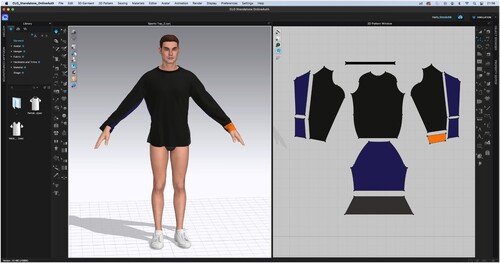
The top shown here is created from the lining of one jacket and two long-sleeved sports tops with traditional construction methods (flatlock and overlock seam types) utilised in sportswear, accommodating multiple fabric types (both knitted and woven). The construction process was supported by both the 3D digital visualisation and the 2D digital lay plan of the garment component pieces. The remaining garment components from the original garments if carried out in a domestic setting, could be considered as waste; however, the researchers envision a continued iterative process with the creation of a library, where pieces could be utilised as and when appropriate. Certainly, if applied within a commercial setting, the constant cycle of components would be essential in the preservation of fabric.
Discussion and conclusion
This research aimed to explore the possibilities of remanufacturing utilising a problem-solving approach through 2D physical and 3D virtual experimentation. Three cycles were executed through the utilisation of an action research approach, where iterations between the cycles informed and directed work going forward. The purpose of this experimentation was to investigate whether the use of 3D fashion design software could increase and promote the creative design possibilities in the reuse of textile products in remanufacture and increased circularity.
Physical experimentation
The interplay between physical and digital experimentation provided plentiful insights and expanded possibilities for future potential research. Referring to the primary rationale for circularity in the retainment of value within an existing system, the study evidenced that large amounts of fabric could be salvaged from pre-used or unwanted garments, preventing the use of virgin fabrics for the production of new products. While the process of deconstruction can be arduous and messy, it provides a material that is readily available, circular and likely to be very low cost. Base layers, such as simple t-shirts or long sleeve tops) were quick and easy to deconstruct, with more complex garments with linings or multiple trims being very time-consuming and creating more waste offcuts. In comparison, it took the researchers 4.5 h to deconstruct a lined jacket, in comparison to only 15 min for a base layer. Working with garments designed to only have one life cycle compromises what is possible in terms of minimising waste during the deconstruction process. This approach adopts the challenge of waste being a potential design flaw as described by Medkova and Fifield (Citation2016). Further research into manufacturing processes or seam treatments could reduce the waste created during the deconstuction process, which contributes to the environmental impact of the product. Additionallly, fibre loss as an environmental pollutant must also be considered, with fragmentation being prevelant when cutting into fabric.
Inevitably this process presented challenges, as fabric pieces and fabric types can be limited; however, designers are problem solvers, and it could be noted that having an infinite number of choices in the fashion world has led us to careless choices. To become part of the circular fashion system, the use of an expansive library of pattern pieces (both physical and digital) would need to gradually become more commonplace in the design process, eventually creating a harmony between working physically and digitally.
Virtual experimentation
The study evidenced that remanufacturing can be significantly assisted in the application of 3D fashion design software, but for designs to be creative and functional, a library of garment pieces are needed. When considering the commercial possibilities for this physical and virtual interplay, the process does rely on the skillset of the practitioner, where knowledge of garment construction and software proficiency is needed. Furthermore, digitising pattern pieces could go beyond capturing just the shape and scale but could also reflect the appearance, behaviour and quality of individual textiles making the design process more realistic.
Beyond exploration of feasibility, observations were made with regard to streamlining and further improving the proposed deconstruction, redesign and remanufacture processes making the methodology more accessible and considering the commercial applications. With increased proficiency, using 3D fashion design software to explore design outcomes can be greatly increased in terms of rapid ideation, moving towards solutions which are zero waste. Once a design is decided it can then be readily applied to physical pieces via traditional construction methods, moving from 2D design to 3D manufacture.
While the use of 3D fashion design software has been traditionally utilised during the front-end of the design process, promoting utilisation at the end-of-life stage of the fashion product lifecycle can extend the role of a designer beyond the primary design phase, promotion the consideration of product-life extension strategies from the initial conceptualisation. As previously discussed in the literature review, the designer is in a position of power to make responsible decisions, with 80% of the environmental impact of any product being decided at the initial design phase (McDonough, Citation2009), through the expansion of knowledge of the designer, they could anticipate and design for potential remanufacturing of the garment towards the end of the product lifecycle. Decisions around the use of trims, hardware and seam construction could be adapted to better facilitate the deconstruction, redesign and remanufacture possibilities. As noted in The Jeans Redesign Guidelines produced by The Ellen Macarthur Foundation (2021), consideration must be paid to ensuring any components added to garments are easy to disassemble to ensure that ‘we build an industry that designs products to be made to be made again’. Additionally, the use of multiple second-hand garments to enable the remanufacture of one must be considered from both an environmental and ethical perspective, with product reuse being a sustainable alternative to garments being thrown to landfill, but potentially not an economically viable model for the fashion industry to shift towards.
The study acknowledged the influence that the advancements in technology and developments of digital realms, such as the Metaverse, is inevitably having on the fashion industry. Whilst the creation of garment designs for digital avatars increases, the ability to physically replicate these in physical form relies on the utilisation of 3D fashion design software, such as Clo3D to bring the garments to life. This would require the design and make process to work in reverse from that demonstrated within this research, moving from the digital to the physical to recreate desirable outfits.
Physical and digital creation
The research promotes the creation of a harmonious working practice between physical and digital interactions throughout the design and make process, utilising these advancements to address pertinent challenges within the traditional linear fashion system in addressing the overproduction, overconsumption, and premature disposal of fashion products. As discussed in the literature review, better processes have to begin somewhere to encourage systematic change (Ellen MacArthur Foundation, 2021). Improving mechanisms to increase possibilities of remanufacturing within fashion is a crucial step towards embracing circularity with the results of this study working towards an innovative design process which would empower the role of the designer in making responsible decision in the initial conceptualisation of a garment but also facilitate the design-for-remanufacture mentality. The support of new mindsets and design practices is said to be key in leading systemic change for the fashion industry (Global Fashion Agenda, Citation2020). This work-in-progress will continue the exploration and streamlining of a remanufacture system which could be feasible and scalable for commercial fashion applications.
Disclosure statement
No potential conflict of interest was reported by the author(s).
Notes
1 The Metaverse, a digital development from tech giant Meta (previously known as Facebook) creates an increased interaction between the physical and the digital, referring to how users interact with technology (Ravenscraft, Citation2022).
References
- Baier, D., Rausch, T. M., & Wagner, T. F. (2020). The drivers of sustainable apparel and sportswear consumption: A segmented Kano perspective. Sustainability, 12(7), 2788. Available at: https://www.mdpi.com/2071-1050/12/7/2788/htm (Accessed 12 June 2022).
- Bakker, C., Wang, F., Huisman, J., & den Hollander, M. (2014). Products that go round: Exploring product life extension through design. Journal of Cleaner Production, 69, 10–16.
- Brooks, A., Fletcher, K., Francis, R. A., Rigby, E. D., & Roberts, T. (2017). Fashion, sustainability, and the Anthropocene. Utopian Studies, 28(3), 482–504.
- English, S. (2006). Design thinking – value innovation – deductive reason and the designers choice. Design research society, international conference in Lisbon.
- Global Fashion Agenda. (2020). GFA 2020 circular design toolbox. Available at: https://ceo.globalfashionagenda.com/# (Accessed: 24 November 2021)
- Iles, J., Treggiden, K., Tan, L. K., Egerton-Read, S., & Henao, L. (2021). ‘Circular-ish: the messy reality of circular design’. The Circular Economy Podcast [Podcast]. 25 March. Available at: https://the-circular-economy-podcast.simplecast.com/episodes/circular-ish-the-messy-reality-of-circular-design-episode-25-Dh2hYq_B (Accessed: 5 February 2022)
- Jenkins, K., & Bertells, L. (2022). Conscious Chatter with Kestrel Jenkins. Rethinking upcycling, questioning trends and reimagining what “seasons” mean. 11/05/21. Available at: https://consciouschatter.com/podcast/2021/05/11-episode-234-loti-reimagine-upcycling (Accessed: 19/02/22)
- Karell, E., & Niinimäki, K. (2020). A mixed-method study of design practices and designers’ roles in sustainable-minded clothing companies. Sustainability, 12(11), 4680.
- Lund, R. T. (1996). The remanufacturing industry: Hidden giant. Boston: Boston University.
- McDonough, W. (2009). Cradle to cradle: Remaking the way we make things. London: Vintage.
- McDonough, W., & Braungart, M. (2010). Cradle to cradle: Remaking the way we make things. New York: North Point Press.
- McKernan, J. (1996). Curriculum action research (2nd. Ed.). London: Kogan Page.
- Medkova, K., & Fifield, B. (2016). Circular design-design for circular economy. Lahti Cleantech Annual Review, 3, 32–47.
- Mintel. (2021). Fashion & sustainability – UK 2021. Available at: https://reports.mintel.com/display/1049485/?fromSearch = %3Fargs%3D%252Fhomepages%252Fdefault%252F%26filters.category%3D124%26last_filter%3Dcategory%26start%3Dredirect# (Accessed: 11 May 2022).
- Nam, C., Dong, H., & Lee, Y. A. (2017). Factors influencing consumers’ purchase intention of green sportswear. Fashion and Textiles, 4(1), 1–17.
- Niinimäki, K., Peters, G., Dahlbo, H., Perry, P., Rissanen, T., & Gwilt, A. (2020). The environmental price of fast fashion. Nature Reviews Earth and Environment, 1(4), 189–200.
- Parkes, J. (2022). Meta launches store selling digital Prada and Balenciaga clothing for avatars. Available at: https://www.dezeen.com/2022/06/27/meta-avatars-store-fashion-design-technology/ (Accessed: 27 June 2022).
- Ravenscraft, E. (2022). What is the Metaverse, Exactly? Available at: https://www.wired.com/story/what-is-the-metaverse/ (Accessed: 27 June 2022).
- Savaskan, R. C., Bhattacharya, S., & Van Wassenhove, L. N. (2004). Closed-loop supply chain models with product remanufacturing. Management Science, 50(2), 239–252.
- Schon, D. (1987). Educating the reflective practitioner: Toward a new design for teaching and learning. San Francisco: Jossey-Bass.
- Sinha, P., Muthu, S. S., & Dissanayake, G. (2016). Remanufactured fashion. Singapore: Springer Singapore.
- Stahel, W. (2010). The performance economy. London: Springer.
- Stahel, W. (2019). The circular economy: A user's guide. New York: Routledge.
- Williams, R. (2021). Balenciaga to Launch Metaverse Business Unit. Available at: https://www.businessoffashion.com/news/technology/balenciaga-to-launch-metaverse-business-unit/ (Accessed: 27 June 2022).


